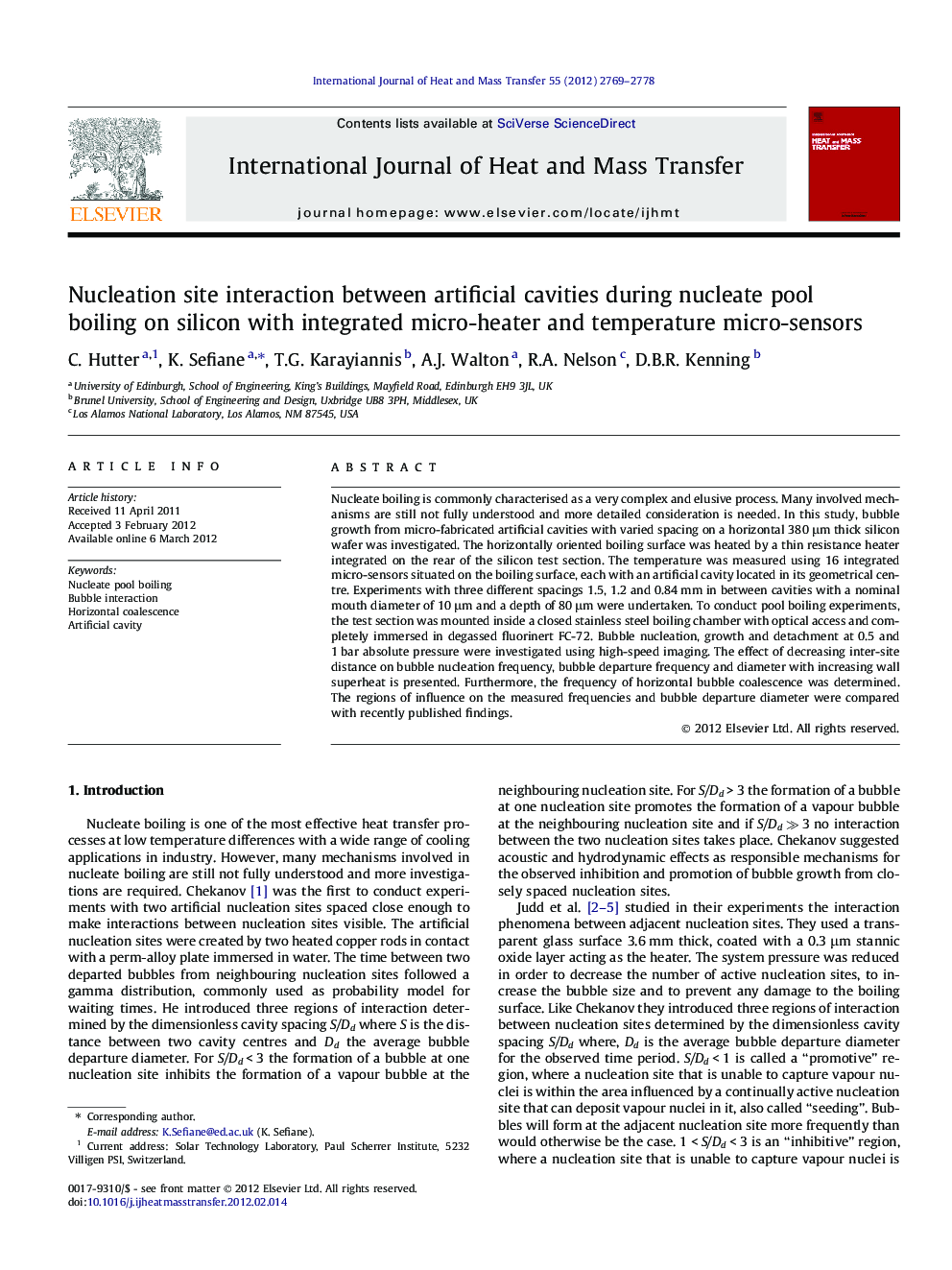| Article ID | Journal | Published Year | Pages | File Type |
|---|---|---|---|---|
| 659457 | International Journal of Heat and Mass Transfer | 2012 | 10 Pages |
Nucleate boiling is commonly characterised as a very complex and elusive process. Many involved mechanisms are still not fully understood and more detailed consideration is needed. In this study, bubble growth from micro-fabricated artificial cavities with varied spacing on a horizontal 380 μm thick silicon wafer was investigated. The horizontally oriented boiling surface was heated by a thin resistance heater integrated on the rear of the silicon test section. The temperature was measured using 16 integrated micro-sensors situated on the boiling surface, each with an artificial cavity located in its geometrical centre. Experiments with three different spacings 1.5, 1.2 and 0.84 mm in between cavities with a nominal mouth diameter of 10 μm and a depth of 80 μm were undertaken. To conduct pool boiling experiments, the test section was mounted inside a closed stainless steel boiling chamber with optical access and completely immersed in degassed fluorinert FC-72. Bubble nucleation, growth and detachment at 0.5 and 1 bar absolute pressure were investigated using high-speed imaging. The effect of decreasing inter-site distance on bubble nucleation frequency, bubble departure frequency and diameter with increasing wall superheat is presented. Furthermore, the frequency of horizontal bubble coalescence was determined. The regions of influence on the measured frequencies and bubble departure diameter were compared with recently published findings.
